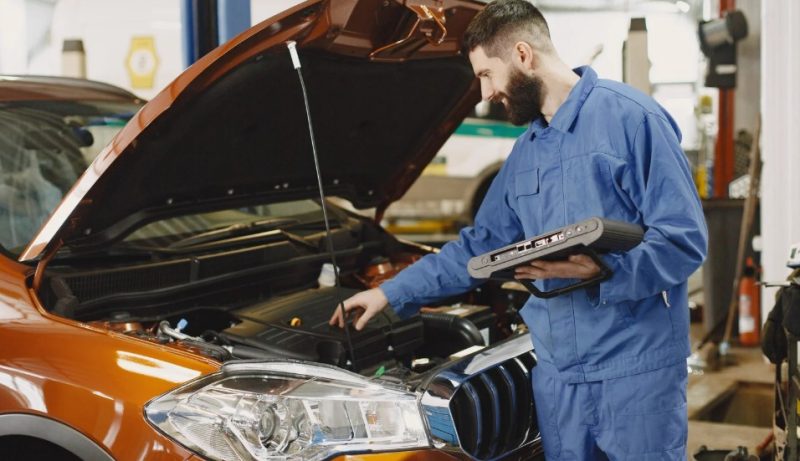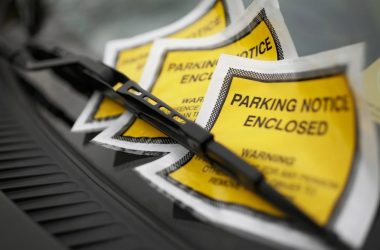Ensuring your vehicle is in good condition is not only a matter of safety but also a legal requirement in the UK.
If you drive a car that isn’t roadworthy, you could face serious legal penalties. Understanding which parts of your car must be properly maintained helps you stay compliant and safe on the road.
From tyres to windscreen wipers, the law outlines specific components that must be fully functional at all times.
Whether you’re heading to work or taking a weekend drive, the condition of your vehicle plays a crucial role in preventing accidents and maintaining public safety.
This blog will help you understand the legally required aspects of car maintenance, giving you the knowledge needed to stay within the law and protect yourself and others on the road.
Why Is It a Legal Requirement to Maintain Your Vehicle in the UK?

Driving a poorly maintained vehicle is not just dangerous, it is illegal. The UK government enforces strict rules to ensure that all vehicles on public roads are safe and roadworthy.
These regulations are part of broader traffic laws aimed at reducing road accidents and injuries caused by mechanical failures.
The Driving and Vehicle Standards Agency (DVSA) and the Highway Code provide clear instructions regarding vehicle safety.
These guidelines are enforced through the annual MOT test and random police checks. When a car fails to meet these standards, the risks increase for both the driver and others on the road.
Key Reasons Behind Legal Maintenance Requirements
- Protects you and other road users from preventable accidents
- Helps reduce breakdowns and emergency repairs
- Maintains public trust in road systems
- Ensures environmental regulations on emissions are followed
- Avoids fines, penalties and insurance invalidation
The UK’s laws focus not just on vehicle performance, but also on its contribution to safe and sustainable transport. Legal maintenance isn’t optional, it’s a responsibility every driver must uphold.
What Does “Roadworthy” Mean According to UK Law?
In the UK, a roadworthy vehicle is one that is safe to drive on public roads. Roadworthiness is defined by the legal standards set by the DVSA and involves multiple aspects of a vehicle’s condition. It includes mechanical integrity, visual clarity, and environmental compliance.
Key areas include the correct functioning of the brakes, steering, lights, tyres, suspension, and mirrors.
If any of these components are faulty, the vehicle may be deemed unroadworthy. Windscreens must also be clear of cracks, and number plates must be legible.
A roadworthy vehicle not only performs reliably but also meets all legal safety and emission requirements. During the MOT, all these aspects are tested.
Failing to maintain a roadworthy car can lead to fines, penalty points, or worse, accidents.
What Part of the Car Does the Law Require You to Keep in Good Condition?
UK law mandates that several key vehicle components must be kept in top working condition to ensure safety and compliance. Failure to maintain them can result in fines, MOT failure, or even prosecution.
Legally Required Car Maintenance Checklist
| Component | Legal Requirement | Why It’s Important |
| Tyres | Minimum tread depth of 1.6mm across the central three-quarters. Must be free from cracks, bulges, or excessive wear. | Worn tyres reduce grip, increase stopping distance, and can result in fines or penalty points. |
| Brakes | Must be fully functional, free from excessive wear, and provide proper stopping power. | Faulty brakes increase accident risk and can lead to MOT failure. |
| Lights and Indicators | All headlights, brake lights, and indicators must be working and visible at all times. | Ensures visibility for yourself and other drivers, preventing accidents and fines. |
| Windscreen and Wipers | Windscreen must be clean, free from major cracks or chips. Wipers must function properly. | Obstructed vision increases accident risk and can lead to a failed MOT. |
| Exhaust and Emissions | Exhaust must be leak-free, securely attached, and meet emissions regulations. | A faulty exhaust can lead to excessive pollution, MOT failure, and fines. |
| Seatbelts | Must be in good working order, securely fastened, and free from fraying or damage. | Essential for passenger safety and legally required to avoid penalties. |
| Mirrors | Must be intact, clean, and correctly aligned to provide a clear view. | A broken or missing mirror can result in accidents and fines. |
| Number Plates | Must be clean, legible, and securely fixed to the vehicle. | Obscured plates can lead to fines, MOT failure, and legal issues. |
Regular maintenance and inspections are essential to meet legal requirements and ensure road safety for yourself and other road users
Why Is Tyre Condition One of the Most Enforced Legal Requirements?

Tyres are your car’s only point of contact with the road, making their condition critical for safety and handling.
In the UK, tyre condition is one of the most frequently checked elements during roadside inspections and MOT tests.
Legal Requirements for Tyres
- Tread depth must be at least 1.6mm across the central three-quarters of the tyre
- Tyres must be free from cuts, bulges, or exposed cords
- Tyres must be correctly inflated to the manufacturer’s recommendation
- All four tyres must be the right type and size for the vehicle
Worn or damaged tyres can lead to skidding, poor grip in wet conditions, and increased stopping distances.
Driving with illegal tyres can result in a fine of up to £2,500 per tyre and 3 penalty points on your licence. Ensuring proper tyre condition is a simple yet essential legal responsibility.
How Do Brake and Suspension Systems Affect Your Legal Responsibilities?
Brakes and suspension systems are essential for controlling your vehicle safely. The law requires that all brakes function correctly, and any signs of wear or malfunction must be addressed immediately.
Suspension systems affect your ability to handle and steer your car, particularly in emergencies.
If your brakes are noisy, soft, or the car pulls to one side, these are signs that the system may not meet legal standards.
Suspension problems, like worn shocks or unstable steering, not only fail MOT tests but also pose serious risks on the road.
Under UK law, you are legally responsible for ensuring both systems are in working order. Regular servicing and immediate repairs help keep these systems compliant and safe.
What Checks Are You Legally Expected to Perform Regularly?

Regular vehicle checks are not just good practice they are a legal requirement in the UK. Ensuring your car is roadworthy helps prevent accidents, avoids fines, and keeps your car insurance valid. A few simple inspections can make all the difference.
Essential Legal Vehicle Checks
- Tyre pressure and tread depth: Ensure tyres meet legal tread depth (1.6mm) and are properly inflated for safety and efficiency.
- All exterior lights and indicators: Check that headlights, brake lights, and indicators are working to maintain visibility.
- Brake function and responsiveness: Test brakes for any unusual sounds or reduced stopping power, as faulty brakes can be dangerous.
- Windscreen and mirrors visibility: Keep them clean and free from cracks to maintain a clear view of the road.
- Fluid levels: Regularly check oil, coolant, screen wash, and brake fluid to keep your vehicle running smoothly.
- Wiper condition and water spray: Ensure wipers are not worn out and washer fluid sprays effectively for clear vision in rain.
- Horn functionality: Test the horn to confirm it works properly for warning others if needed.
- Number plate cleanliness: Make sure your number plate is clean and fully visible to avoid fines.
Performing these checks weekly or before long trips ensures your vehicle remains safe and roadworthy, keeping you and others protected on the road.
How Can You Monitor Your Vehicle’s Compliance Without a Mechanic?
You don’t need professional skills or tools to ensure your car remains legally compliant in the UK.
There are accessible, user-friendly methods to monitor your vehicle’s roadworthiness at home or on the go.
These practices help prevent legal trouble and reduce the risk of failing an MOT or getting pulled over by the police for unsafe vehicle conditions.
Ways to Stay Legally Compliant
- Use the GOV.UK MOT check tool to track MOT status and advisory notes
- Check dashboard warning lights and act on any alerts immediately
- Use mobile apps that help schedule routine maintenance reminders
- Follow your vehicle owner’s manual for guidance on inspections
- Maintain a log of oil changes, filter replacements, and tyre rotations
- Conduct a visual inspection before daily drives or road trips
These habits help you catch early signs of wear or malfunction. Staying alert and proactive makes it easier to meet legal standards without needing to visit a garage every time.
What Is Tested in an MOT That Relates to Legal Condition?
The MOT test is a legal requirement for vehicles over three years old in the UK, ensuring they meet safety and environmental standards. Failing an MOT means your car cannot be legally driven on public roads, except for test or repair appointments.
Key checks include brakes and tyres to ensure performance and legal tread depth, along with steering and suspension for stability. Lights, indicators, and reflectors must function correctly for visibility, while the windscreen, wipers, and washers ensure a clear driving view.
Seatbelts and airbags are inspected for occupant safety, and the exhaust system is tested to meet emission standards.
Additionally, number plates, mirrors, and the horn must be in proper working order for identification and signalling.
Each of these components must comply with UK legal requirements. Keeping your vehicle in good condition not only ensures an MOT pass but also prevents fines, bans, and potential accidents
What Happens if You Drive a Car That’s Not Legally Maintained?

Failing to maintain your vehicle properly is a legal offence in the UK, with serious consequences.
Key components like tyres, brakes, and lights must be in safe working order to keep your car roadworthy. Ignoring maintenance can lead to enforcement action, especially if your vehicle is involved in an accident.
Legal Consequences of Poor Vehicle Maintenance
- Fixed penalties and fines: On-the-spot fines can be issued for unsafe tyres, broken lights, or other maintenance failures.
- Penalty points on your licence: Driving a poorly maintained vehicle can result in points that stay on your record for years.
- Invalidation of insurance: If an accident occurs, insurers may refuse to cover claims due to improper maintenance.
- Prohibition notices: The DVSA or police can issue notices that prevent you from driving until repairs are made.
- Vehicle seizure or destruction: In severe or repeated cases, your car may be impounded or scrapped.
Even minor faults can escalate into legal problems. Keeping your car maintained protects both your safety and your legal standing.
How Can You Keep Your Vehicle in Legal Condition All Year Round?
Maintaining your car isn’t a one-time task it’s an ongoing responsibility. Seasonal changes, daily wear, and long trips all impact your vehicle’s condition. A structured approach to maintenance ensures compliance with UK road laws.
Strategies for Year-Round Legal Compliance
- Schedule interim services: Regular servicing between MOTs helps catch small issues before they become major problems.
- Use seasonal checklists: Prepare for winter with proper tyres, de-icer, and screenwash to maintain safety in colder months.
- Keep emergency tools: Store spare bulbs, tyre inflators, and basic tools to handle minor repairs on the go.
- Clean mirrors and plates: Ensuring clear visibility and legible number plates prevents unnecessary fines.
- Check alignment and suspension: After rough roads or bad weather, inspect these components to avoid long-term damage.
- Maintain service records: Keeping track of oil changes, filter replacements, and repairs shows responsible vehicle care.
- Replace worn parts promptly: Addressing minor wear and tear quickly prevents bigger, costlier, and legally risky issues.
Staying proactive with vehicle maintenance keeps your car roadworthy, reduces breakdown risks, and ensures you drive legally all year round.
Conclusion
Maintaining your vehicle in good condition isn’t just about extending its lifespan or saving on repairs. It is a legal requirement in the UK, aimed at safeguarding all road users.
From tyres and brakes to windscreen wipers and number plates, each component contributes to the overall safety and legal roadworthiness of your vehicle.
By understanding your responsibilities and performing regular checks, you reduce the risk of accidents, fines, or insurance issues.
The law is clear if you drive, you must maintain your car. Staying informed and proactive is the best way to avoid trouble and enjoy peace of mind every time you hit the road.
FAQs About What Part of the Car Does the Law Require You to Keep in Good Condition
Do I need to check tyre pressure as part of legal maintenance?
Yes, maintaining correct tyre pressure is legally required as it affects handling, fuel efficiency, and tyre wear, ensuring road safety and compliance.
Can dashboard warning lights affect roadworthiness status?
Yes, dashboard warning lights can indicate critical safety issues, and ignoring them may result in MOT failure or legal penalties for driving an unroadworthy vehicle.
What documents prove my car is legally maintained?
Your MOT certificate, service history, and repair receipts prove compliance, helping during inspections, insurance claims, or when selling your vehicle.
Are electric vehicles subject to the same maintenance laws?
Yes, EVs must meet the same legal safety standards as petrol and diesel cars, including brakes, lights, tyres, and overall roadworthiness.
How do police check if a vehicle is roadworthy?
Police use visual inspections, number plate recognition, and on-the-spot checks to verify MOT, tax, and safety compliance, stopping vehicles if necessary.
Is cosmetic damage ever a legal issue for UK drivers?
Cosmetic damage is only a legal concern if it affects safety, such as a cracked windscreen or broken lights that could compromise visibility or control.
Does leasing a car change your legal maintenance responsibilities?
No, leasing a car does not exempt you from maintenance duties, and you must ensure it remains roadworthy, including regular servicing and MOT checks.







